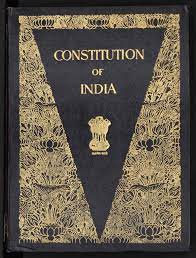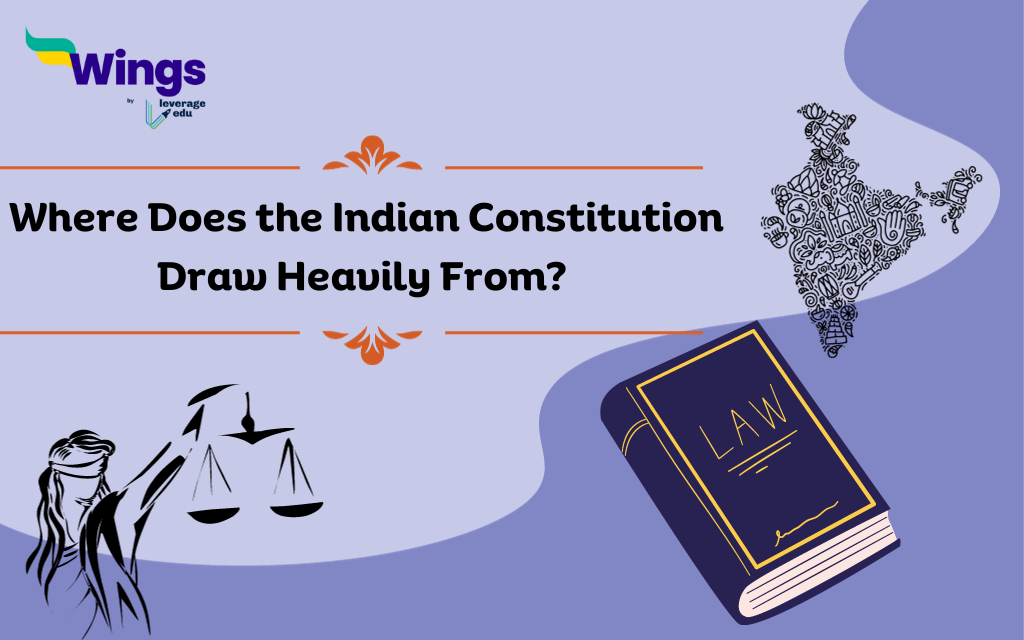The Constitution of India is the pillar or the backbone of the democracy of India. The making of the Constitution was formulated by the Constituent Assembly and adopted on 26th November 1949. But it came into effect on 26th January 1950. Since the constitution was adopted on 26th November, this day is celebrated as Constitution Day or Samvidhan Divas or can be also known as “ National Law Day”. In this blog, we will know the sources from which the Indian Constitution draw heavily from.

Indian Constitution is the longest handwritten constitution in the world and was calligraphed in both Hindi and English by Prem Behari Narain Razada. To complete the process it took around 2 years, 11 months and 18 days. The Constitution originally had 395 articles but has now increased to 470 articles, 12 schedules and 25 parts. However, there have been in total 105 important amendments so far.
Also Read – 11 Features of Democracy in India
When we talk about our constitution, the articles of the constitution are a patchwork. They were borrowed from various sources which are varied and diverse and reflect the long history of India. Major leaders like Mahatma Gandhi, Jawaharlal Nehru, and B. R Ambedkar played a significant role in shaping the Constitution. The sources from which Indian Constitution Draw Heavily From are-
- Government of India Act, 1935 – Before independence, this act was the major constitutional document which was enacted by the British Parliament for India. Many features of the constitution were taken from this act including the division of power between the central and state governments.
- British Constitutional Law – Since the Britishers ruled India for over 200 years, features like the rule of law, the principles of democracy, parliamentary sovereignty and the Westminster system of government are borrowed from the British constitution.
- Indian Independence Act of 1947 – The adaptation of the Constitution of India came from this act which ruled out that there would be two Dominions, India and Pakistan. Thus rolling out features of freedom and liberty.
Also Read – Important Articles in Indian Constitution [Complete List]
- Constitutions of different Countries – The Indian constitution draws heavily from various countries like the United States, Great Britain, Australia, Canada, etc. The Constitution took inspiration from these countries and has imparted them into our constitution. Some major features that were borrowed include –
| COUNTRY | BORROWED FEATURES |
| Government of India Act, 1935 | Judiciary Federal Scheme Office of Governor Administrative Details Public Service CommissionEmergency Provisions |
| U.S. Constitution | Judicial Review Fundamental Rights Removal of Supreme Court and High Court Judges Independence of Judiciary Post of Vice-President Impeachment of the President |
| Constitution of Australia | Joint sitting of the two houses of Parliament. Concurrent List Freedom of Trade, Commerce and Intercourse |
| Constitution of Canada | Vesting of residuary powers in the center Advisory Jurisdiction of the Supreme Court Federation with a strong centre Appointment of State Government by the centre |
| Constitution of U.K. | Writs Parliamentary Government Single Citizenship Cabinet System Rule of Law Bicameralism Parliamentary Privileges Legislative Procedure |
| Constitution of Japan | The procedure established by the Law |
| Russia (Soviet Union), (USSR) Constitution | Ideals of Justice in the Preamble (Political, Social and Economic) Fundamental Duties |
| Constitution of France | Ideals of equality, liberty and fraternity in the preamble. Republic |
| Constitution of Germany | During the Emergency, the suspension of Fundamental Rights |
| Constitution of South Africa | Election of the members of the Rajya Sabha Procedure for Amendment in the Indian Constitution. |
| Constitution of Ireland | Nomination of members to Rajya Sabha Directive Principles of State Policies (DPSP) Method of Election of the President. |
The Indian Constitution was a by-product which included its lessons and legacy from the Report of the Simon Commission, discussions of the Third Round Table Conference, and Joint Select Committees all included in the Government of India Act, 1935. Thus elaborating the needs and aspirations of the Indian Population and for incorporating the leader’s vision of future India in the present Constitution the Indian Constitution draw heavily from others.
Relevant Blogs
FAQs
The Indian Constitution of 1950 was influenced by the Government of India Act 1935. This earlier act helped shape the Constitution. It is considered important to the Constitution’s creation.
The original Constitution of India was handwritten by a man named Prem Behari Narain Raizada (also known as Saxena). Raizada spent six months in the Constitution Hall (now the Constitution Club) carefully writing each of the 395 articles, 8 schedules, and a preamble in both English and Hindi.
India’s government is guided by the Constitution of India. The Constituent Assembly adopted the Constitution on November 26, 1949, and it became effective on January 26, 1950. The Constitution establishes a federal structure with some unitary characteristics and a parliamentary government.
For more information about such informative articles, check the trending events page of Leverage Edu.
 One app for all your study abroad needs
One app for all your study abroad needs














